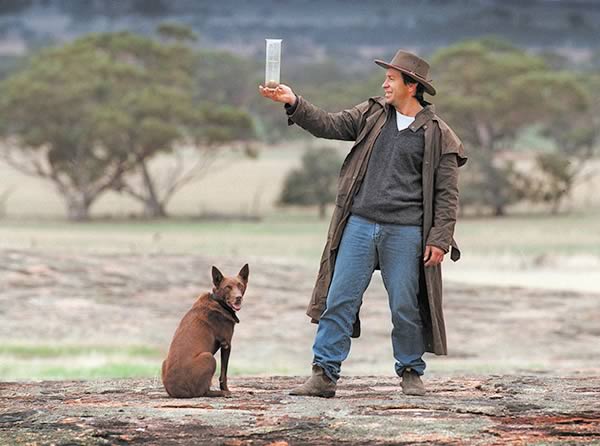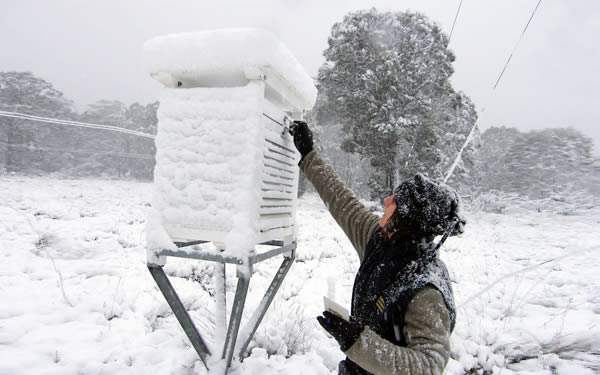Volunteer weather observers: more than 100 years of vital data collection
05 December 2015
From seas to storms and rainfall to rivers, thousands of volunteers across Australia gather weather, climate and water information to help strengthen our long-term understanding of Australia's climate and deliver crucial weather and forecasting services to communities across Australia.
Volunteers have been observing and recording weather, climate and water data for the Bureau since 1908—over 100 years. Our volunteer networks now include weather observers, rainfall and river height observers, storm spotters and volunteers at sea.
Rainfall and river height observers
Every day thousands of volunteers collect data from around 5900 rainfall observer stations and over 1000 river height gauges. These readings are critical not only to local flood forecasts, but also in the broader reaches of water catchments.
The work of our volunteers plays a vital role in helping the Bureau to:
- assess Australian water resources and provide products such as the National Water Account, Australian Water Resources Assessment and the Seasonal Streamflow Forecasts; and
- meet its obligations to compile and deliver comprehensive water information across Australia (a requirement under the Commonwealth Water Act 2007).

Volunteer rainfall observer of Doongin Peak, Western Australia. Image © Commonwealth of Australia.
Volunteers at sea
The importance of weather information to mariners was a driving force behind the establishment of many of the world's national meteorological services. Much of our knowledge of global climate was originally taken from the logs of sailing ships of the 18th and 19th centuries.
From early last century, marine weather forecasts improved the safety of shipping after improved communications systems enabled mariners to transmit weather observations and receive forecasts from the Bureau.
The Bureau coordinates a network of around 80 foreign and Australian ships making meteorological observations such as air pressure, temperature, humidity, sea surface temperature, wind speed and direction, and visual observations such as wave heights.
Volunteers here, there and everywhere
Our smaller volunteer networks are just as important. Volunteers collect a variety of data each day including:
- evaporation pan readings, usually with 203 mm rain gauge readings;
- lightning flash counters; and
- synoptic observations.

Volunteer weather observer in Cradle Mountain – Lake St Clair National Park, Tasmania.
Image © Commonwealth of Australia.
Volunteer excellence awards
To recognise the consistent and outstanding achievements of our volunteers, the Bureau offers excellence awards to:
- individual volunteers (50 years);
- family volunteers (100 years, and each succeeding 50 years); and
- ships providing synoptic reports (5 years).


Comment. Tell us what you think of this article.
Share. Tell others.